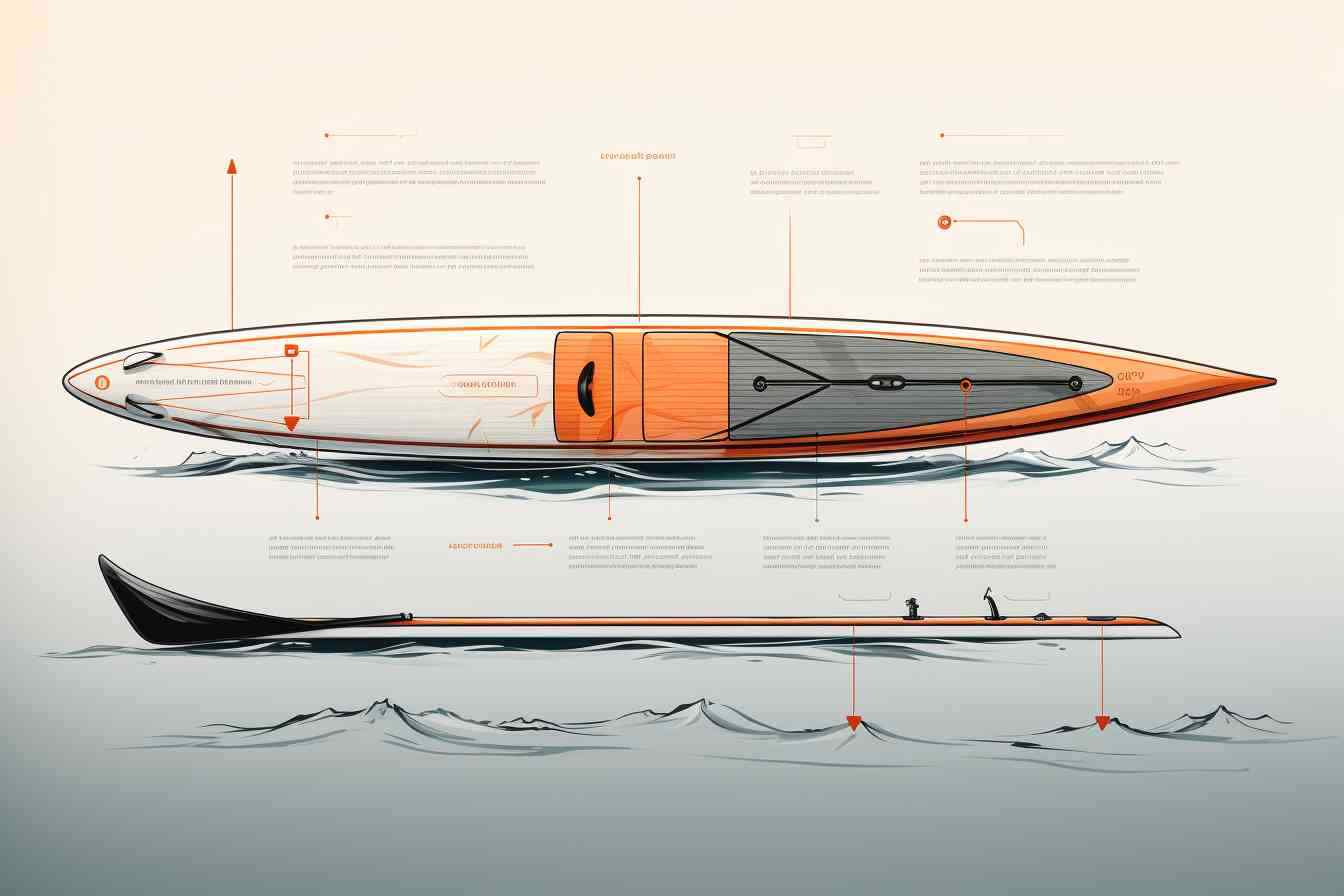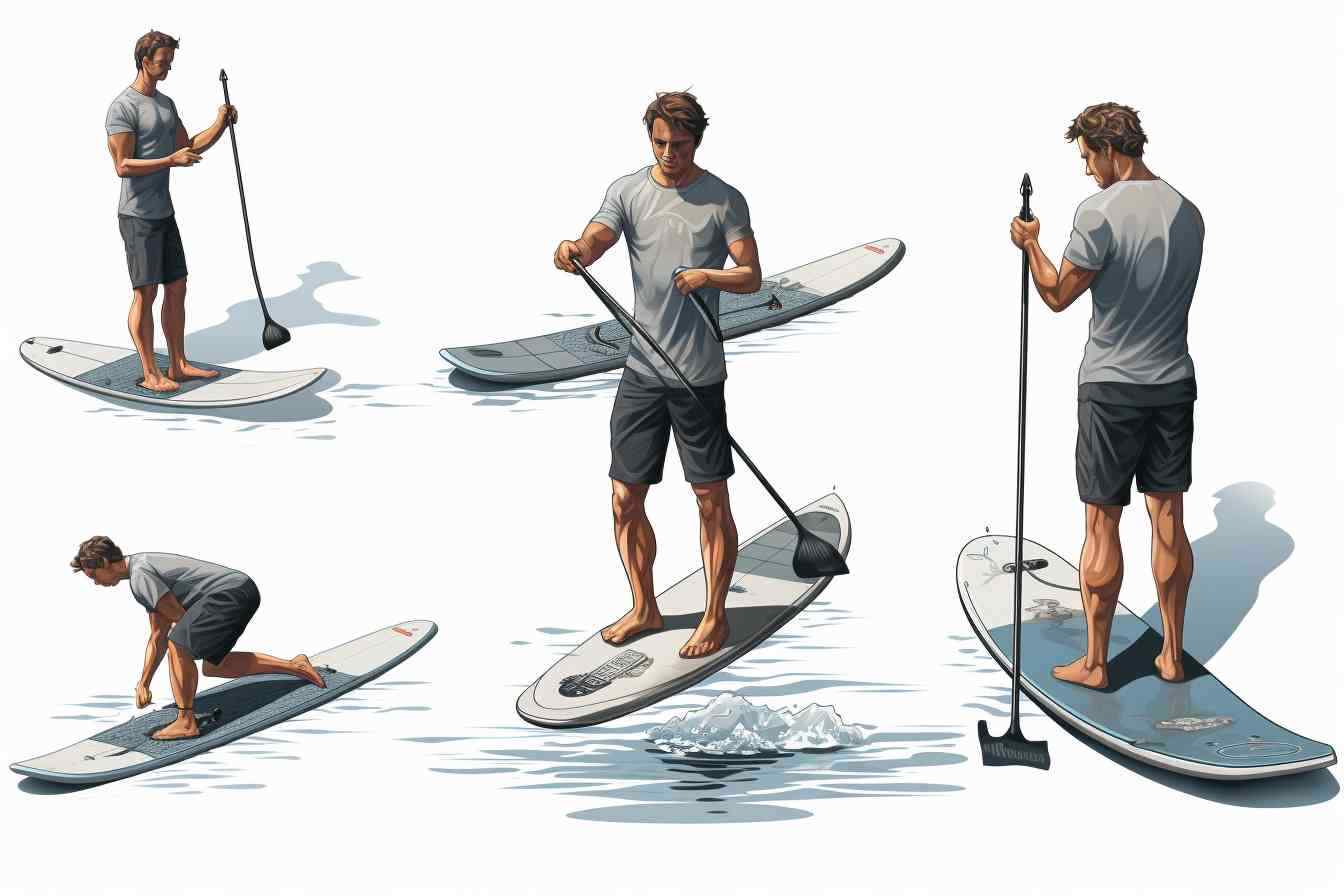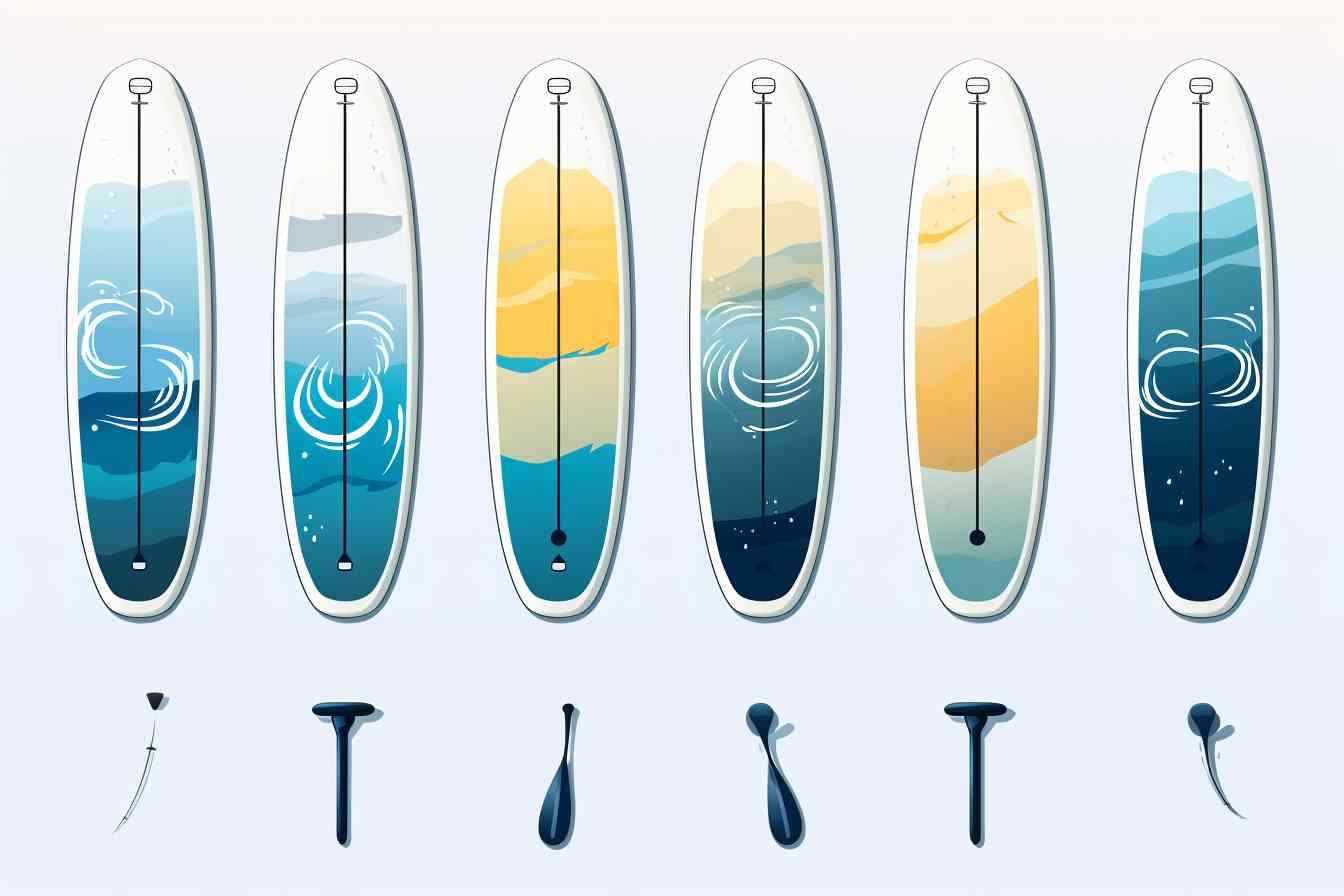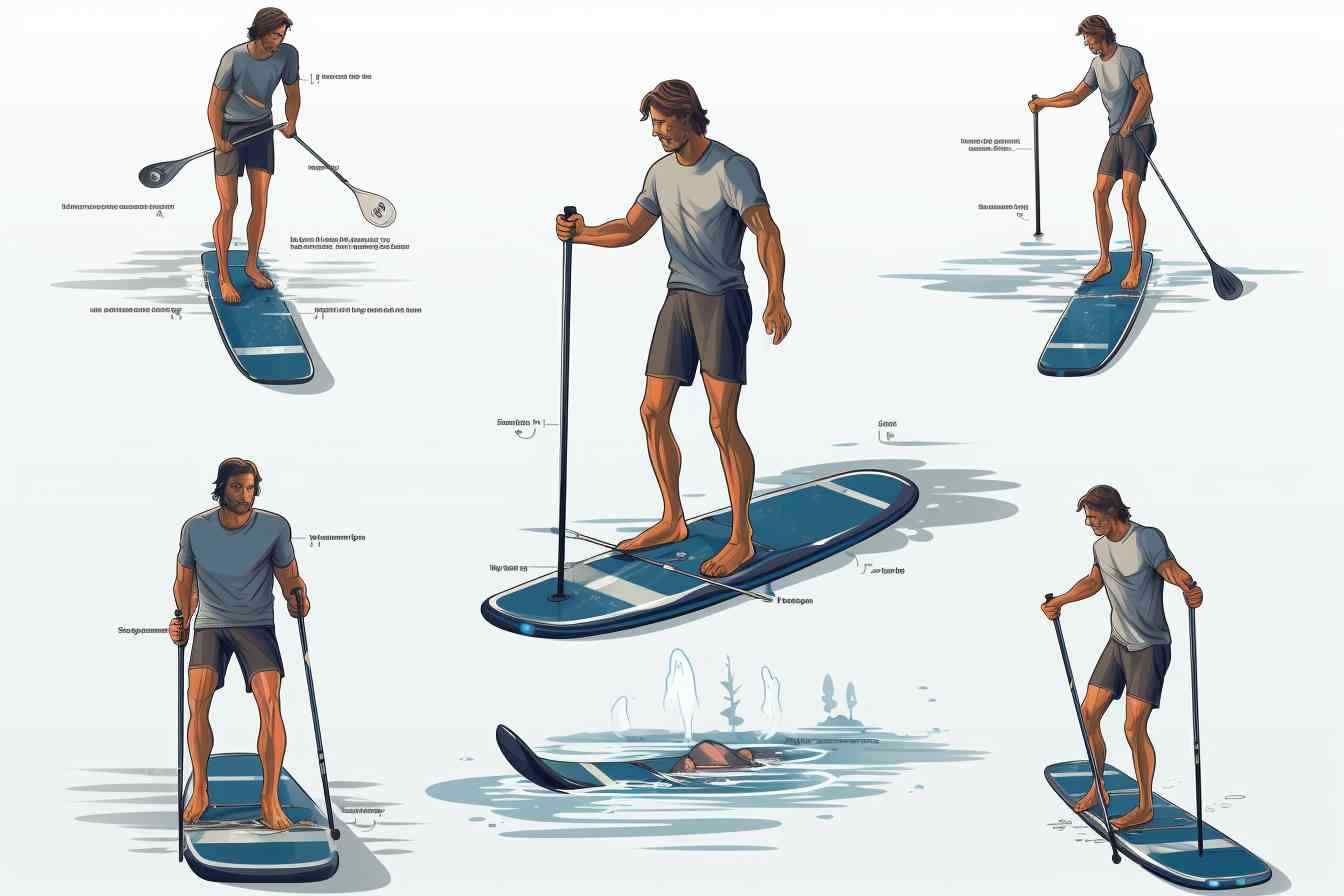Master the Art of Paddle Boarding with These Ultimate Strokes

Summary
- Intro: The Ultimate Guide To Paddle Board Strokes
- What Are The 5 Phases Of The Paddle Stroke?
- What Are 3 Important Paddle Boarding Tips?
- How Do You Do A Paddle Board Stroke?
- Am I Too Fat To Paddle Board?
- Final Verdict
- Frequently Asked Questions
- How do I get started with paddle board strokes?
- What’s the correct technique for a forward stroke in paddle boarding?
- What are some common mistakes when learning paddle board strokes?
- Is there a special stroke for turning my paddle board?
- How can I increase my speed with paddle board strokes?
- What stroke should I use in windy conditions?
- Can you explain the “draw stroke” in paddle boarding?
- Is there a way to paddle board that engages my core more?
- What’s the best stroke to use for paddle boarding in waves?
- How do I perform a reverse stroke in paddle boarding?
- Related Video
- Frequently Asked Questions
Intro: The Ultimate Guide To Paddle Board Strokes

Alright, let’s dive right in – you’re standing on your paddleboard, the shimmering water beneath you, and you’re itching to glide across the surface like a pro. But hold up! To do that, you gotta master the strokes, and believe me, there’s a bit more to it than just dipping your paddle in the water and hoping for the best.
The Forward Stroke So you wanna shoot across the water with grace and speed, huh? The forward stroke is where it all starts. You’ll want your body to do most of the work here, not just your arms. Plant the blade fully in the water, close to the board, and push it all the way back to your feet – that’s where the magic happens. Make sure to twist your torso as you go; it’s like you’re wringing out a towel – you get that sweet torque that propels you forward. Oh, and keep your eyes up, champ – staring at your toes is gonna throw you off balance.
The Reverse Stroke Now, if you’ve gone and found yourself heading toward a “this is not where I planned to end up” situation, the reverse stroke is your new best friend. This one is the yin to the forward stroke’s yang. Simply reach back with your paddle, and pull the water toward you. It’s like you’re scooping the water. You gotta be a bit crafty with your body position here, sitting back slightly, but not so much that you tumble into the drink. It’s all about finesse, not brute force.
The Sweep Stroke Ah, the sweep stroke – the smooth operator of turns. When you need to make a quick change in direction, this guy’s got your back. Plant your paddle out wide – the wider, the better – and sweep it in a big arc towards the tail of your board. Picture yourself as a majestic eagle wing – it’s all about that wide reach and strong pull. You’ll feel that board swing around like it’s in a dance with the water. Keep your knees soft and your balance keen, because it’s easy to get a bit wobbly during this number.
The Draw Stroke You ever reach for something just out of grasp? That’s the draw stroke. Except instead of grabbing another bag of chips, you’re pulling your board sideways through the water. Reach out beside the board, stick the paddle in vertically - like you’re slicing through the water - and bring it straight back to you. It takes a gentle touch because jerking on that paddle is going to tip you into the water faster than you can say “unscheduled swim”. It’s like flirting with the edge of balance – you gotta play it cool.
Now, I’ve thrown a lot at you, but practice is key. Each stroke has its own rhythm, its own dance moves you gotta learn. Remember, your paddleboard is responding to your lead, so stay relaxed, keep practicing, and pretty soon, you’ll be cutting through the water like it’s nothing. Keep at it, and the river will be your second home in no time.
What Are The 5 Phases Of The Paddle Stroke?

Oh, paddle strokes – they’re the bread and butter of slicin’ through that beautiful water. Isn’t it just grand? When you’re out there on your board, it’s not just about splashing around; it’s like a dance, you know? Your paddle’s the partner and the water’s the dance floor. Speaking of dances, let’s get into the five phases of the paddle stroke, or should I say, the five steps of this oh-so-lovely aquatic tango.
Now, the first phase is the reach or, as I like to call it, the anticipation. It’s where you’re leaning forward, stretching out, really reaching for that water like it’s the last cookie in the jar. You gotta fully extend that arm, keep your eyes on the prize and focus on that spot where your paddle’s gonna kiss the water. And let me tell you, when you nail the reach, oh boy, it’s like the universe aligns!
Next up, it’s the catch. Here’s where we get serious. You plant that paddle blade fully in the water, no half-measures! Think of it like grabbin’ hold of a good opportunities – you gotta be firm and decisive. Make sure to bury that blade; feel the water cradle it like it’s precious. ‘Cause, in a way, it is – it’s your connection to the waves.
Thirdly, there’s the power phase. And this, my friends, is where the magic happens. It’s the heart of the stroke. You’ve caught the water, now time to pull. Engage your core, not just your arms, and drive that paddle back with all the gusto of a kid in a candy store, I tell ya. But keep it smooth, like butter on a hot skillet, smooth.
The fourth phase? The exit. It’s as crucial as any good exit – done at the right time and it’s graceful. Too late and it’s like stumbling out the door with your shoelaces tied together. So, just as the paddle blade comes level with your feet, out it comes. Like a whisper, no splash, no drama.
And finally, the recovery. This ain’t just a pause, it’s a setup for your next stroke; like catching your breath before belting out the next line of your favorite song. Lift that paddle out, swing it forward, relax for just a sec, and get ready to do it all again, baby!
Now, ain’t that just a poetic journey from reach to recovery? Paddle boarding’s got rhythm, and these phases? They’re your tempo – keep ‘em varied and savor the flow. Happy paddlin’!
Types Of Paddle Boards
All righty, let’s dive right into the different strokes you should know when you’re hitting the water with your paddle board.
- Forward Stroke: This one’s your bread and butter, the stroke that propels you straight ahead. You’ll dip your blade fully into the water near your board’s nose and push it towards the tail. It’s all about making smooth, efficient strokes, where technique trumps brute strength every time.
- Reverse Stroke: Just as it sounds, the reverse stroke is the yin to the forward stroke’s yang. If you’ve got to back up or slow down, you’ll thrust your paddle near the tail of your board and push towards the nose. It’s like hitting the brakes gently, but in the water.
- Sweep Stroke: Wanna turn your board without a fuss? Sweep strokes are your go-to. They are wide, arcing strokes that start at the nose and end at the tail, causing the board to pivot in the opposite direction of the side you’re paddling on. Imagine drawing a rainbow with your paddle—that’s the sweep stroke for you.
- Draw Stroke: This stroke has saved my bacon more times than I can count when I needed to move sideways, say to avoid an unexpected obstacle. You’ll reach out to the side and pull the water towards your board. It’s kind of like opening a drawer, except you’re in the water and there’s no handle.
- Pivot Turn: This one’s a bit advanced and requires a bit more balance, but it’s incredibly handy. You’ll be doing a sweep stroke, but this time you’ll shift your weight to the tail of the board to lift the nose slightly. Then sweep away – this lifts the front of the board for a quick turn. You’ll feel like a nimble water ninja once you’ve got this down pat.
Oh, and before I forget, no matter what stroke you’re using, always remember to keep your core engaged. It’s not just a workout for your arms—your entire body gets in on the action. Stay nimble, stay alert, and before you know it, you’ll be paddling like a pro. Happy boarding!
What Are 3 Important Paddle Boarding Tips?

Gosh, have you ever wondered why some folks seem to glide on the water like they were born on a paddleboard? I’ll tell you, it’s not all down to balance—paddle strokes are the secret sauce. So let me dive right into the nitty-gritty of some top-notch paddle boarding tips you’ll want to remember next time you hit the waters.
Now, the Forward Stroke—it’s your bread and butter out there. Start by reaching forward with your paddle, pushing the blade all the way under the surface. You’ve gotta slice the water like a hot knife through butter, pulling back with a smooth consistency, engaging your core—feels like doing a bit of a dance with the water, doesn’t it? Keep your arms straight and twist from your torso, not just your arms. It’s a whole-body game.
Of course, we can’t ignore the Reverse Stroke. It’s like hitting the brakes, except there’s no screeching halt—just a graceful slow-down or change in direction. To master this one, just push the paddle blade toward the tail of the board. It’s the pivot turn’s best friend when you’re out there trying to do a quick 180. Lean a little back and push the water away from you, slowly. Kinda like rewinding a movie, huh? Let’s not forget the importance of using the torso here too—it’s all in the twist!
And then there’s the Sweep Stroke, your go-to for making those smooth turns. Think of it as tracing a huge half-circle with your paddle from the nose of the board to its tail. The trick? You’ve got to rotate your shoulders to extend that reach, and slice the paddle wide around the board – like waving bye-bye to all your troubles on shore. It’s almost like painting a rainbow on the surface of the water with your paddle. Just remember to lean into the stroke to keep your balance.
Paddle boarding’s a blast, but you gotta get the strokes down to really enjoy the ride. Trust me, once you’ve got these nailed, it’ll feel like you can talk to the water—and it’s listening.
How Do You Do A Paddle Board Stroke?

Alright, let’s dive right into the nitty-gritty of paddle boarding strokes - it’s a real game-changer when you’re out on the water. So, you’re standing on your board and you’re itching to glide over the water like a pro. Thing is, how you maneuver that paddle is key to a smooth and efficient ride, and that’s what I’m here to chat about.
First up, the ol’ forward stroke – this is your bread and butter, the stroke that propels you onward. Here’s what you do: keep your feet shoulder-width apart and imagine yourself as strong and steady as an oak. Plant your paddle in the water up by the nose of your board, reach far forward, dig deep, and push that water back past your feet. Keep your core engaged – it’s not all in the arms, buddy. Your torso’s doing a dance, twisting with each stroke. Think of it as a rhythm, right?
Then there’s the reverse stroke, which is just like throwing your car into reverse. When you’ve gotta slow down or back it up, this stroke is clutch. Simply flip the script on your forward stroke. Dunk your paddle in close to the tail of the board, and instead of pushing, you’ll pull the water towards ya. Remember, it’s still a dance with your core muscles leading the charge.
Turning strokes are a little tricky at first glance, but they’re real smooth once you get the hang of ‘em. To turn to the left, you’ll paddle on the right side, and for a right turn, just paddle on the left. If you want to make sharper turns, paddle further from the side of your board – it’s like the difference between taking a leisurely curve and a quick hairpin turn in a sports car.
Now, don’t even sweat if this feels like a lot to take in. Every stroke boils down to feeling the water and working with it. Stay loose, keep that balance, and before you know it, you’ll be carving through the water like it’s second nature. Keep practicing, stay patient, and always, always listen to what the water’s telling ya.
Am I Too Fat To Paddle Board?
Whoa, hang on there, let’s hit the brakes on that kind of self-talk, shall we? I’m here to tell you, size is just a number, and it shouldn’t be the dealbreaker when you’re itching to get out on the water. Paddle boarding is for everyone, and I mean everyone. I’ve seen folks of all shapes and sizes mastering the waves, and it’s a sight to behold, really.
Now, you might be thinking, “Can a paddle board support me?” or “Will I even balance?” Sure, these are valid concerns, but they’re not insurmountable obstacles. Manufacturers have seriously stepped up their game, creating boards with higher weight capacities that cater to a diverse range of body types. Ah, the magic of modern engineering!
Choosing the right board is key—it’s like finding the perfect pair of jeans. You want one that’ll hug the right spots and give you the confidence to strut your stuff. A wider, longer, and thicker board will generally offer more stability, which means you’ll be gliding across the lake or coastline like a pro before you know it.
And let’s talk about strokes, because they’re the real secret sauce here. With proper technique, your size becomes nearly irrelevant! Focus on honing that paddle stroke, and it’ll do wonders. Solid strokes come from the core, so engage those muscles, stand tall (like you own the place), and draw that paddle through the water with the poise of a queen or king. You got this!
Remember, paddle boarding is about the rhythm, the connection with the water, and the freedom it brings. So toss aside those doubts! Embrace the challenge, and before long, you’ll be paddling with the best of ‘em, feeling like you’re walking on water. It’s liberating, I’ll tell you that much. Now, scoot! There’s an adventure waiting for you, no matter your size.
Final Verdict
Alright, let’s dive right into the meat of the matter – that final verdict on paddle board strokes. When you’re out there on the water, gliding through each ripple and wave, there’s a bit of magic in finding your rhythm with the paddle. And let’s be real, it’s all about technique, isn’t it? You want your strokes to be smooth, efficient, and to get you moving without flipping your board and taking an unexpected swim.
Now, after breaking down each stroke from the J-stroke for steering to that powerful forward stroke, I’ve got to say, they all have their moment to shine. But if you’re aiming for that sweet spot of paddle boarding bliss, you gotta focus on your core. That’s right; this isn’t just an arms game. Engage that core, rotate your torso, and you’ll feel the difference – more power, less fatigue, and let’s not forget the bonus of a solid core workout!
But here’s the kicker, while the technique is crucial, there’s truly no one-size-fits-all answer. Each body of water you conquer calls for a slight twist on your strokes. Choppy sea? You’ll want shorter, more frequent strokes. Tranquil lake? Long, fluid strokes will do the trick. So, my final say? Master the basics, then listen to the water – it’s the best teacher you’ve got. Get out there and find the stroke that resonates with your paddling soul! Just remember to paddle responsibly and keep that zest for the water burning.
Frequently Asked Questions
How do I get started with paddle board strokes?
Oh, getting started is super easy and pretty fun if you ask me! Just hop on your board, get comfy, and grip your paddle with both hands. Make sure your stance is solid—feet shoulder-width apart, knees slightly bent. Start with some basic forward strokes, slicing the paddle into the water and pushing it back. Imagine you’re pulling the board past the paddle. That’s the gist of it!
What’s the correct technique for a forward stroke in paddle boarding?
Ah, the forward stroke—your bread and butter on the water! Standing tall but relaxed, reach forward with your paddle and plant it near the nose of the board. Then, pull it back towards your feet, keeping the paddle vertical. It’s all in the torso—rotate it to get that power. And don’t forget to switch sides every few strokes to stay on a straight path. It feels like dancing with the water!
What are some common mistakes when learning paddle board strokes?
Oh boy, we all mess up a bit at the start. One biggie is using too much arm strength—your poor arms will be screaming for mercy! Instead, rely on your torso for that oomph. Another slip-up is paddling with the blade facing the wrong way. Keep the angle facing away from you for efficiency. And, try not to stand stiffly; staying loose helps with balance.
Is there a special stroke for turning my paddle board?
Absolutely, there’s a nifty maneuver called the “sweep stroke.” It’s like drawing a big arch with your paddle on one side of the board. For a quicker turn, the “back paddle” is your friend; just paddle backward on the side you want to turn towards. It might be frustrating at first, but once you get it, you’ll be turning on a dime!
How can I increase my speed with paddle board strokes?
Wanna go fast, huh? I get the need for speed! Focus on improving your stroke technique—efficient, powerful strokes beat hurried, sloppy ones any day. Engaging your core gives you more power. Also, a slightly shorter paddle can give you a higher stroke rate. And remember, practice makes perfect. The more time you spend on the water, the faster you’ll get.
What stroke should I use in windy conditions?
Wind can be a real party pooper, but I’ve got a trick or two. Use a “low brace” stroke: keep your paddle close to the board and horizontal, skimming the water’s surface on the windy side. This gives you stability and helps prevent the wind from catching your paddle like a sail. It’s a bit tough at first, but you’ll find your groove with some practice.
Can you explain the “draw stroke” in paddle boarding?
Oh, the draw stroke is like giving the water a handshake. Reach out to the side, perpendicular to your board, and pull the water towards you. It’s great for moving sideways or docking next to your paddle pal. Just a few draw strokes and you’re gliding sideways like a crab!
Is there a way to paddle board that engages my core more?
You bet! Paddling is an undercover core workout. For max core engagement, focus on rotating your torso with each stroke. Imagine you’re wringing out a wet towel with your muscles. That rotation is key. And keep that paddle shaft vertical to make sure your abs are doing their fair share of the work.
What’s the best stroke to use for paddle boarding in waves?
Riding waves? Sounds like a blast! When you’re on wavy water, a stable, strong stance is crucial. Use quick, short strokes to maintain balance and momentum. And don’t be shy about bending your knees—it helps absorb the bounciness of the waves. Paddle with gusto and let the rhythm of the ocean guide you!
How do I perform a reverse stroke in paddle boarding?
Ok, ready to drop it in reverse? This one’s handy when you need to back up or stop. Push the paddle blade forward into the water, close to the front of your board, and pull it back towards the tail. Keep it close to the rail (the side of the board) for better control. It’s a bit counterintuitive, but with a couple of tries, you’ll be reversing like a pro!


Comments